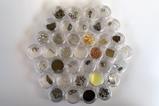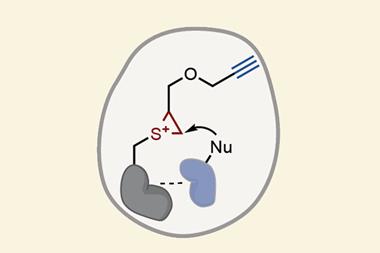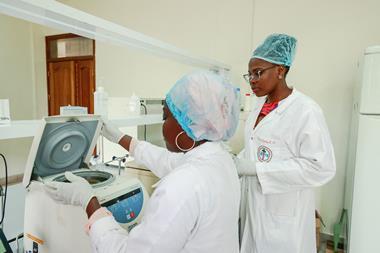Opportunities for chemistry communication to contribute to health literacy

Things are about to change in the Motion household – we’re welcoming our first baby soon and excitedly preparing for their arrival. Frankie, our beautiful five-year-old dog, knows that’s something is up. She’s moulding herself even closer to us for cuddles than usual – a feat I thought impossible – and wondering why there’s so much new furniture in the ‘spare room’.
Keen to learn as much as we possibly can before the baby arrives, we’ve been soaking up as much expectant parent literature as possible and signing ourselves up to pretty much all of the prenatal classes offered by our local hospital. The plan was to attend as many classes in person as possible, but some work travel and scheduling clashes meant that we attended some online.
It’s probably just as well – my enthusiasm for one of the graphics shared as part of the midwife’s teaching materials might have shocked my classmates (my partner less so).
It’s no secret that I’m a big fan of Andy Brunning’s work graphically communicating chemistry through ‘Compound Interest’, so I was delighted to see his infographic on ‘Six key pregnancy hormones and their roles’ pop onto the Zoom window.
Hormonal rollercoaster
Through six clear graphics, Brunning communicates the ‘rollercoaster of shifting hormone levels’ during pregnancy by charting the levels of six key hormones over 40 weeks – the average length of a human pregnancy. The graphs also show where each hormone is produced and are accompanied by short descriptions of their roles in foetal development, labour and lactation.
From the human chorionic gonadotropin (hCG) produced after implantation of the fertilised egg into the uterus (this is responsible for the coloured line on a positive pregnancy test) to the dramatic rise in oxytocin that triggers contractions prior to labour, these chemical messengers play a key role in creating the environment needed for new life and its delivery into the world.
I’d read about the roles of these hormones (and a few other notable characters) in some of the books I’ve been poring over, but there was something that hit different when we heard about their roles as our course leader took us through the infographic.
It struck me that this type of clear explanation of key chemical concepts would be very valuable for other medical discussions with health professionals. Want to understand how the medicine you’ve been prescribed works or why it has possible contraindications due to a preexisting condition or other prescriptions? Sometimes, this information is too much to take in during an appointment and other times there simply isn’t enough time to discuss everything.
Here is where infographics are a particularly powerful tool – something that can be taken away and looked at in a patient’s own time and reviewed at different stages. The mixture of images with shorter descriptions is also much more engaging than a wall of text, not to mention more accessible.
Communication health check
As science communicators and educators, we talk a lot about bringing science to people in new ways, but of course when it comes to health, science reaches people in all sorts of ways that they might not expect or be able to control. With a clearer understanding of scientific concepts, people and patients can feel more empowered to make decisions about their lives.
The good news is that there’s already a whole load of material in Brunning’s back catalogue with the potential to support greater health literacy. For example, infographics filed under ‘medicinal chemistry’ take a closer look at topics as diverse as analgesics, anaesthetics and acne medications, and those under ‘biology’ take a look at topics including blood types and the viruses between colds and flu.
If the infographic reappears at our next in-person class, I’ll take the opportunity to open up another one of my #ChemistryConversations with any parents-to-be who seem game.
There’s also still a little bit of space on the nursery wall, perhaps just the right size for a changing Compound Chem infographic…

















No comments yet